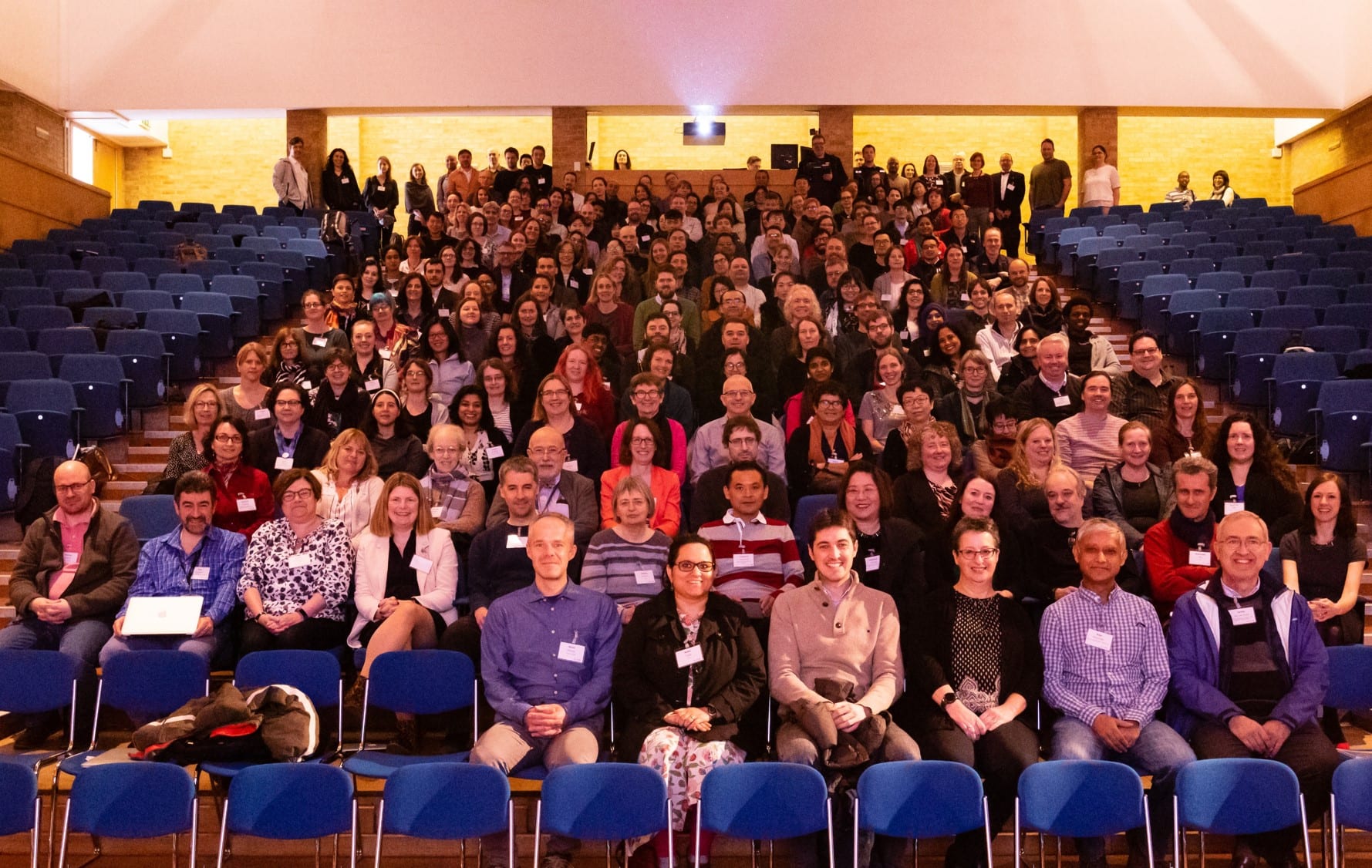Posted By: Marina DiStefano, PhD, ASHG Communications Committee
I recently returned from the ISB Biocuration 2019 conference in Cambridge, UK. To me, this year’s conference focused on two of the core goals of the International Society for Biocuration (ISB): one, to promote communication and exchanges between curators and two, to encourage best practices by providing documentation on standards and annotation procedures.

Communication and Exchanges between Curators
Many presenters encouraged sharing of database resources and curation materials so as not to duplicate efforts and to facilitate transparency. For example, Rolf Apweiler, director of EMBL-EBI, discussed the Alliance of Genome resources, an effort to locate all curations of model organisms on the same website in a standardized format. The Alliance is founded by FlyBase, Mouse Genome Database, the Gene Ontology Consortium, Saccharomyces Genome Database, Rat Genome Database, WormBase, and the Zebrafish Information Network and contains information about six model organisms. In a related vein, Niklas Blomberg, director of ELIXIR, pointed out that many of the curation resources used by the entire scientific community are reliant on grant funding, making their future existence unstable. He discussed how resources should be defined as Core Data Resources to potentially solicit permanent stable funding.
There were also interactive workshops each afternoon that further supported this idea of communication between curators. One workshop, in which I presented, discussed the efforts of the Gene Curation Coalition (GenCC). This Coalition is an international group of gene curation resources with the goal of harmonizing the terms for defining clinical validity of gene:disease relationships. Three GenCC member groups (ClinGen, Genomics England PanelApp, and Orphanet) each took turns presenting their gene curation strategies. Participants were able to discuss the similarities and differences between the approaches. The workshop ended with survey results from the scientific community about the gene:disease validity terms.
Documentation and Standards
The more time I spend as a curator, the more I understand the value of consistent curation language. This idea was heartily supported by presenters at the conference who encouraged use of ontologies and the idea that each curation resource should strive to abide by FAIR (Findable, Accessible, Interoperable, and Reusable) data standards. Varsha Khodiyar, data curation editor at the journal Scientific Data, discussed how Springer Nature is trying to support FAIR data sharing to help reduce irreproducible experiments. Sirarat Sarntivijai, ELIXIR interoperability platform coordinator, spoke about recommended interoperability resources, tools that could be used by curators, creators of websites, or even authors to make data FAIR.
Many talks about specific resources, such as SIGNOR/DISNOR, SwissLipids, and the BioGRID Interaction database, cemented the idea that resources are most useful when they use ontologies to categorize terms.
The four days of this conference were a fascinating and important glimpse into the world of curation resources. After attending, it is quite clear that many of these resources are critical to the scientific community and keep research moving forward, thanks to the hard work of all the biocurators. The poster sessions were intimate and allowed for thoughtful discussion, useful suggestions, and hopefully the start of budding collaborations. Workshops were very interactive, and it was clear that the curators harbor a passion for their field of work and the work of their fellow curators.
If you have ever done or are planning on doing any curation, I highly recommend you attend this conference. The 13th International Biocuration Conference takes place in Bar Harbor, Maine from May 17-20, 2020.
Marina DiStefano, PhD, is a member of the ASHG Communications Committee and a postdoc at Harvard Medical School. She has been a member of ASHG since 2018.
